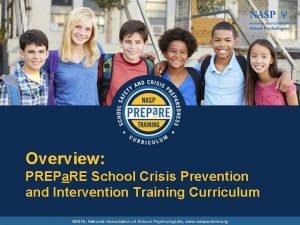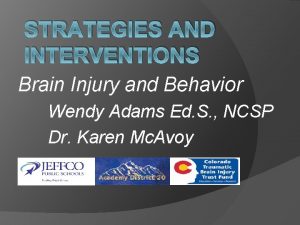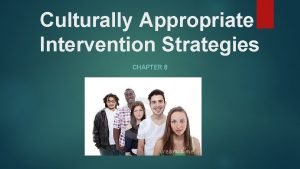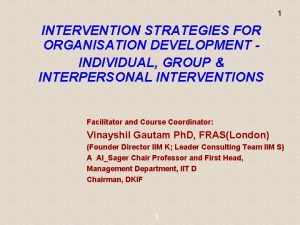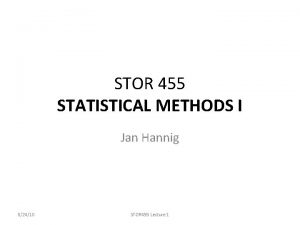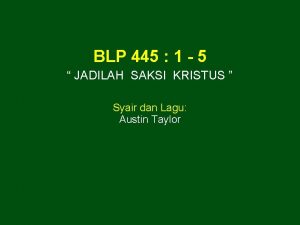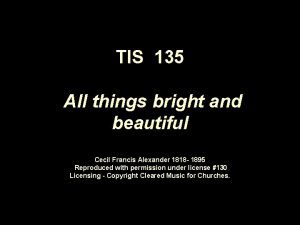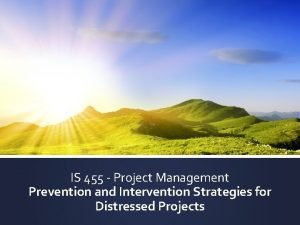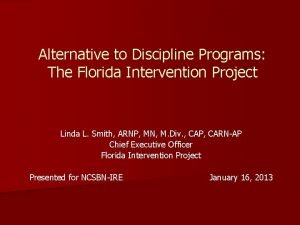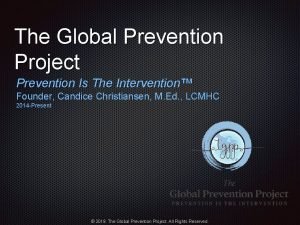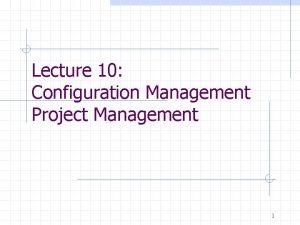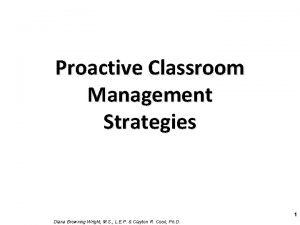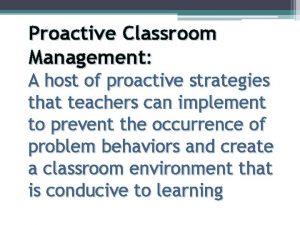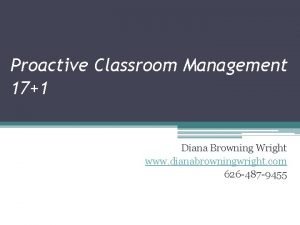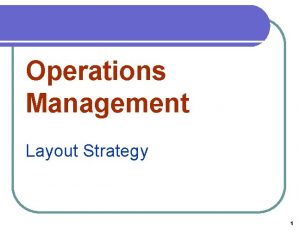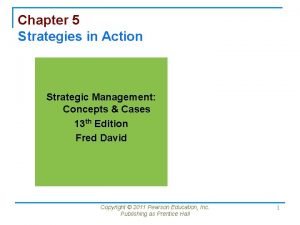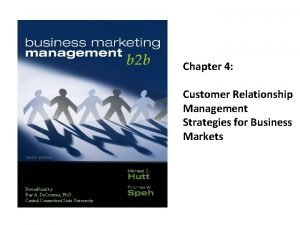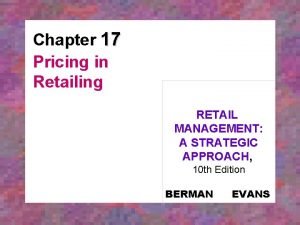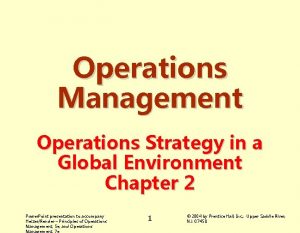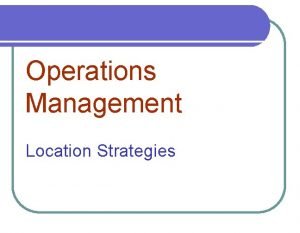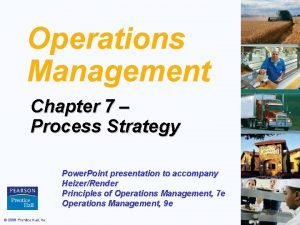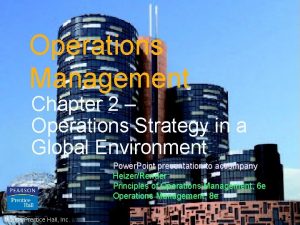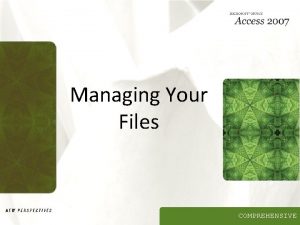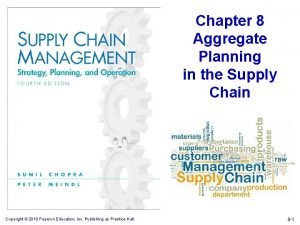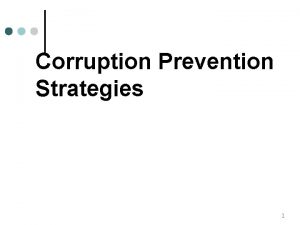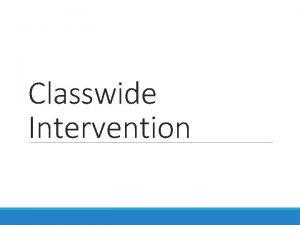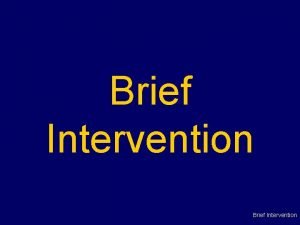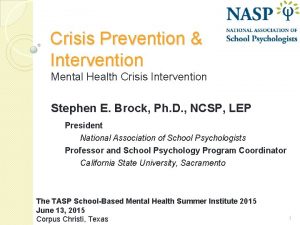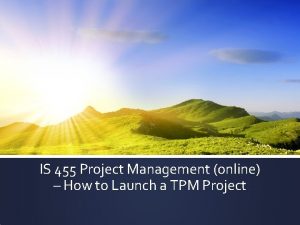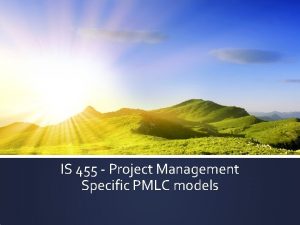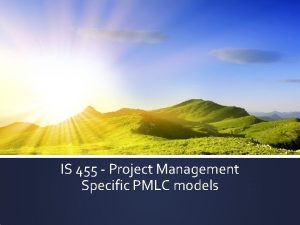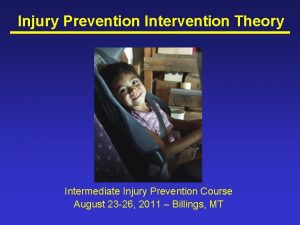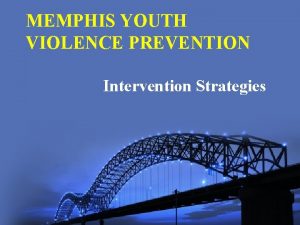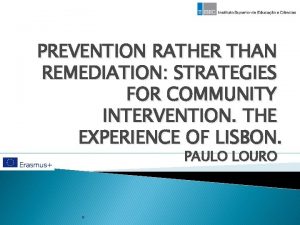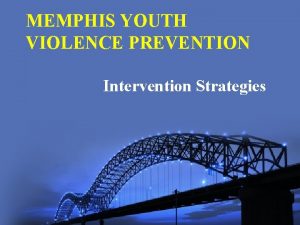IS 455 Project Management Prevention and Intervention Strategies


























































- Slides: 58

IS 455 - Project Management Prevention and Intervention Strategies for Distressed Projects

Agenda Today – Prevention and Intervention Strategies for Distressed Projects Personality Inventory – Myers-Briggs Personality Inventory Simulation Powered Learning Debrief/Awards Final information Thursday – Team Time/Mentor meeting COPYRIGHT TOM SULZER © 2018

Effective Project Management: Traditional, Agile, Extreme Managing Complexity in the Face of Uncertainty Ch 13: Prevention and Intervention Strategies for Distressed Projects Presented by Tom Sulzer) Copyright Tom Sulzer © 2018

Ch 13: Prevention & Intervention Strategies … Summary of Chapter 13 Ø Ø What is a distressed project? Prevention strategies Intervention strategies Roles and responsibilities of the PSO with respect to distressed projects Copyright Tom Sulzer © 2018

Ch 13: Prevention & Intervention Strategies … What Is a Distressed Project? Ø Ø Ø A project that has exhibited a performance trend that, if continued, will result in certain failure A project whose performance has exceeded one or more metric values and is now a high risk for failure A project that has recently experienced some significant change that may result in its failure NOTE: These projects have not yet failed but are at some risk of failure. Copyright Tom Sulzer © 2018

Ch 13: Prevention & Intervention Strategies … Typical Causes Leading to Distressed Projects Ø Ø Ø Poor, inadequate, or NO requirements definition Inappropriate or insufficient sponsorship Complexity of requirements not recognized Unwillingness to make tough decisions Lag between project approval and kick-off No plan revision after significant cuts in resources or time Estimates done with little planning or thought Over commitment of staff resources Inconsistent client sign-off No credibility in the baseline plan Unmanageable project scope Copyright Tom Sulzer © 2018

Ch 13: Prevention & Intervention Strategies … Strategies for Dealing with Distressed Projects Ø Ø Prevention strategies Intervention strategies Ne hel ed p? Copyright Tom Sulzer © 2018

Ch 13: Prevention & Intervention Strategies … Prevention Strategies – Tools, Templates, and Processes Ø Ø Ø Requirements gathering WBS construction Dynamic Risk Management Process Scope Change Management Process Milestone Trend Charts* Earned Value Analysis* * Details provided Copyright Tom Sulzer © 2018

Ch 13: Prevention & Intervention Strategies … Conservative trend patterns Figure 13 -01 Copyright Tom Sulzer © 2018

Ch 13: Prevention & Intervention Strategies … Tighter control limits as an early warning… Figure 13 -02 Copyright Tom Sulzer © 2018

Ch 13: Prevention & Intervention Strategies … Earned Value – Basic Performance Indices Schedule Performance Index (SPI) A measure of how close the project is to performing work as it was actually scheduled. SPI = EV/PV Cost Performance Index (CPI) A measure of how close the project is to spending on the work performed to what was planned to have been spent. CPI = EV/AC Copyright Tom Sulzer © 2018 INDEX VALUES < 1: over budget or behind schedule > 1: under budget or ahead of schedule

Ch 13: Prevention & Intervention Strategies … Earned Value – Performance Indices Project: ALPHA 1. 6 1. 4 1. 2 1. 0 0. 8 S C C S 0. 6 C under budget ahead of schedule S over budget behind schedule 0. 4 1 2 3 4 5 6 7 8 Project Week Copyright Tom Sulzer © 2018 9

Ch 13: Prevention & Intervention Strategies … The Intervention Process Team Analyze Current Situation Client Revise Desired Goal Where are we? Where can we go? Team/Client Evaluate Options How can we get there? Team/Client Generate Revised Plan How will we get there? Copyright Tom Sulzer © 2018

Ch 13: Prevention & Intervention Strategies … Status of the Current Deliverables DELIVERABLE COMPLETE STATUS COMMENTS A Yes B No 3 days behind Error in specification C No 6 days behind Key resource not available D No 12 days behind Key resource not available E No 12 days behind Not yet open for work Completed 2 days late Figure 13 -04 Copyright Tom Sulzer © 2018

Ch 13: Prevention & Intervention Strategies … Root Cause Analysis PROBLEM STATEMENT WHY CAUSE #1 CAUSE #2 CAUSE #3 REASON #2 REASON #1 WHY CAUSE #4 REASON #4 WHY CAUSE #7 WHY CAUSE #5 CAUSE #6 Copyright Tom Sulzer © 2018 CAUSE #8

Ch 13: Prevention & Intervention Strategies … Root Causes – Project Conception Ø Ø Ø Ø Project based on unrealistic business case Project is based on executive leverage Client cannot clearly define objectives Project based on state-of-the-art and immature technology Lack of client ownership Client funding and/or timescale unrealistic Failure to decompose the project into smaller feasible steps Copyright Tom Sulzer © 2018 23. 1

Ch 13: Prevention & Intervention Strategies … Root Cause – Project Planning & Initiation Ø Ø Ø Ø Ø Unrealistic cost, time, and capability estimates Failure to clearly define requirements Poor client/team relationships Poor scoping activities Lack of meaningful client involvement Poor WBS specification Unreliable risk management plan Poor planning Failure to clearly define roles and responsibilities Copyright Tom Sulzer © 2018

Ch 13: Prevention & Intervention Strategies … Root Cause – Solution Definition Ø Ø Ø Ø Failure to apply appropriate scope management Poor choice of technical platform/architecture Starting a phase prematurely Poor choice and preparation of requirements definition approach Lack of proper design reviews Lack or loss of skilled resources Poor standards deployment Poor requirements traceability Copyright Tom Sulzer © 2018

Ch 13: Prevention & Intervention Strategies … Root Cause – Solution Development Ø Ø Ø Project overtaken by technology advances Lack of proper change control Inadequate training and supervision Inadequate client review Poor management of outside contractors Lack of formal testing and integration approaches Copyright Tom Sulzer © 2018

Ch 13: Prevention & Intervention Strategies … Root Cause – Solution Implementation Ø Ø Ø Inadequate client/end user training and support Catastrophic failure with no mitigation plans Missing a critical go live date Copyright Tom Sulzer © 2018

Ch 13: Prevention & Intervention Strategies … Revise Original Goal – Prepare Workshop Environment 1. 2. 3. 4. 5. 6. 7. Hold workshop offsite at a comfortable hotel A good restaurant Large room with lots of whiteboard space Several flip chart stands Breakout rooms for private discussions Use an experienced outside facilitator Agree on the ground rules Copyright Tom Sulzer © 2018

Ch 13: Prevention & Intervention Strategies … The Process of Revising the Project Goal Review original business case Prepare list of corrective actions Determine feasible business target Update business case Is the revised business case feasible? YES NO Repeat process F 1 Copyright Tom Sulzer © 2018

Ch 13: Prevention & Intervention Strategies … Review Original Business Goal Ø Ø Ø Review the original business case Review the current business needs Align the business case to current business needs RESULT Change of requirements and/or reprioritizing of requirements Copyright Tom Sulzer © 2018

Ch 13: Prevention & Intervention Strategies … Prepare List of Corrective Actions Ø Ø General Requirements Design, Development, and Integration Testing and Implementation Copyright Tom Sulzer © 2018

Ch 13: Prevention & Intervention Strategies … General corrective actions Ø Ø Ø Strengthen/replace/reorganize management where needed Implement improvements in development and test environment where needed Consider redistributing work to COTS vendors Copyright Tom Sulzer © 2018

Ch 13: Prevention & Intervention Strategies … Requirements Corrective Action Ø Ø Ø Establish a client-based scope change request process Remove functionality where the business case is weak Prioritize functionality (Mo. SCo. W) Review requirements for any package customization Prioritize functionality by business unit and remove as required Copyright Tom Sulzer © 2018

Ch 13: Prevention & Intervention Strategies … Design, Development/Integration (Corrective Actions) Ø Ø Review the solution for more use of COTS Partition into swim lanes for schedule compression Consider incremental releases Simplify interfaces to external applications Copyright Tom Sulzer © 2018

Ch 13: Prevention & Intervention Strategies … Testing and Implementation Ø Ø Consider incremental user testing Use pilots for early release Copyright Tom Sulzer © 2018

Ch 13: Prevention & Intervention Strategies … How Can We Get There? – Evaluating Options Brainstorm potential project options Prioritize options Conduct a SWOT analysis Frame the get well plan Is the revised business case feasible? YES NO Develop exit strategy Figure 13 -06 Copyright Tom Sulzer © 2018

Ch 13: Prevention & Intervention Strategies … SWOT Analysis Areas Ø Ø The degree of PSO support offered to the project team throughout the PMLC model for this option The skill and competency profile of the team with respect to this option The degree to which the client has been meaningfully involved in the project and will be able to support this option The contents of the scope bank related to this option Copyright Tom Sulzer © 2018

Ch 13: Prevention & Intervention Strategies … How Will We Get There? – The Steps to Revise the Plan Ø Ø Ø Prepare revised project plan Get management acceptance of revised plan Prepare to re-start the project Copyright Tom Sulzer © 2018

Ch 13: Prevention & Intervention Strategies … Prepare revised plan Ø Ø Ø Ø Revised deliverables and milestone dates Create a new deliverables-based WBS Duration, labor, resources Schedule to meet milestone dates Updated risk management plan Closely monitor performance metrics Tightly controlled scope change management process Copyright Tom Sulzer © 2018

Ch 13: Prevention & Intervention Strategies … Get management acceptance Ø Ø Client meaningfully participates in project planning and supports the plan Management approval to start Copyright Tom Sulzer © 2018

Ch 13: Prevention & Intervention Strategies … Prepare to Re-start the Project n n Assuring that the team’s skills and competencies are correctly aligned with the revised project Clearly defined roles and responsibilities A revised risk management plan is in place and assigned to a team member A defined monitoring system is in place to detect any suspect trends in schedule or cost variances Copyright Tom Sulzer © 2018

Ch 13: Prevention & Intervention Strategies … An Intervention Process Template Step 1: Step 2: Step 3: Step 4: Step 5: Step 6: Step 7: Step 8: Determine sponsor expectations and intervention Define problem(s) and assign owner(s) Assemble intervention team and establish intervention process Conduct Root Cause Analysis and Force Field Analysis Develop corrective action plan Revise project scope Revise project plan and deliverables Gain sponsor approval and authorization to continue the project Copyright Tom Sulzer © 2018

Ch 13: Prevention & Intervention Strategies … Roles & Responsibilities of the PSO with Respect to Distressed Projects Ø Ø Analyzing the current situation Revising the desired goal Evaluating options Generating the revised plan Copyright Tom Sulzer © 2018

Ch 13: Prevention and Intervention Strategies for Distressed Projects Class discussion #1: Define the metrics you would put in place as early warning signs that an Adaptive Project Framework (APF) project is heading for a distressed condition. Create at least one metric for each of the five phases of an APF project. Be specific and include your trigger values. Copyright Tom Sulzer © 2018

Ch 13: Prevention and Intervention Strategies for Distressed Projects Class discussion #2: For the Order Entry subsystem, define an early-warning SPI tracking metric with trigger values and a supporting graphic display. Copyright Tom Sulzer © 2018

Ch 13: Prevention and Intervention Strategies for Distressed Projects Class discussion #3: Despite the team’s heroic efforts to keep the Order Entry subsystem on schedule, it has fallen behind and used the management reserve. You are now expected to be two days late. The Logistics subsystem can no longer start on schedule, and the contractors are booked to start. What are you going to do? Copyright Tom Sulzer © 2018

Building Your Team The “A” Team, of course! BUT Who is going to give you “all the best”? What will other managers think of the manager who always “goes for the cream”? What about training and career development needs? What will be subcontracted? Copyright Tom Sulzer © 2018

Human Behavior in the Work Environment? Do human needs affect the work environment? - What affects human needs? Copyright Tom Sulzer © 2018

Maslow’s Human Needs Model Copyright Tom Sulzer © 2018

Human Behavior in the Work Environment? Does personality affect the work environment? Copyright Tom Sulzer © 2018

Go to the Myers. Briggs Test in the class web page and click the “Take the test!” Button. Copyright Tom Sulzer © 2018

MB Types n n Draw energy from self (Introvert) or others (Extrovert) Gather information in terms of facts (Sensation) or use concepts and imagination (Intuition) Thinking judgment is objective, logical; Feeling judgment is subjective, personal Attitude to structure - Judgment like closure, deadlines; Perception people like openness and flexibility Copyright Tom Sulzer © 2018

Personality Types n Be aware! Technology people tend to be of a particular type: 1985 survey Myers-Briggs Type Extrovert/Introvert IS Developer General Population 75% Introvert 25% Introvert Sensation/Intuition 55% Intuitive 25% Intuitive Thinking/Feeling 80% Thinking 50% Thinking Judgment/Perception 50% Judgment Copyright Tom Sulzer © 2018

Myers-Briggs Profiles Extraversion (E) vs. Introversion (I) Extraversion (E): I like getting my energy from active involvement in events and having a lot of different activities. I'm excited when I'm around people and I like to energize other people. I like moving into action and making things happen. I generally feel at home in the world. I often understand a problem better when I can talk out loud about it and hear what others have to say. Introversion (I): I like getting my energy from dealing with the ideas, pictures, memories, and reactions that are inside my head, in my inner world. I often prefer doing things alone or with one or two people I feel comfortable with. I take time to reflect so that I have a clear idea of what I'll be doing when I decide to act. Ideas are almost solid things for me. Sometimes I like the idea of something better than the real thing. Sensing (S) vs. Intuition (N) Sensing (S): Paying attention to physical reality, what I see, hear, touch, taste, and smell. I'm concerned with what is actual, present, current, and real. I notice facts and I remember details that are important to me. I like to see the practical use of things and learn best when I see how to use what I'm learning. Experience speaks to me louder than words. Intuition (N): Paying the most attention to impressions or the meaning and patterns of the information I get. I would rather learn by thinking a problem through than by hands-on experience. I'm interested in new things and what might be possible, so that I think more about the future than the past. I like to work with symbols or abstract theories, even if I don't know how I will use them. I remember events more as an impression of what it was like than as actual facts or details of what happened. Copyright Tom Sulzer © 2018

Myers-Briggs Profiles cont. Thinking (T) vs. Feeling (F) Thinking (T): When I make a decision, I like to find the basic truth or principle to be applied, regardless of the specific situation involved. I like to analyze pros and cons, and then be consistent and logical in deciding. I try to be impersonal, so I won't let my personal wishes--or other people's wishes--influence me. Feeling (F): I believe I can make the best decisions by weighing what people care about and the points-of-view of persons involved in a situation. I am concerned with values and what is the best for the people involved. I like to do whatever will establish or maintain harmony. In my relationships, I appear caring, warm, and tactful. Judging (J) vs. Perceiving (P): Judging (J) : I seem to prefer a planned or orderly way of life, like to have things settled and organized, feel more comfortable when decisions are made, and like to bring life under control as much as possible. Perceiving (P): To others, I seem to prefer a flexible and spontaneous way of life, and I like to understand adapt to the world rather than organize it. Others see me staying open to new experiences and information. . Copyright Tom Sulzer © 2018

Behavior In Work Environment (Di. SC) Di. SC: William Moulton Marston 1928 People-focused Task-focused Active, Outgoing Influential Dominant Passive, Internal Steady Conscientious How personality reacts to Goals, Fears, Values Copyright Tom Sulzer © 2018

Di. SC Profiles n n n Profile gives guidance on own behavioral tendencies Allows some insight into others behavior Can lead to thoughtful reflection on how to deal with own/other behaviors Copyright Tom Sulzer © 2018

Myers – Briggs Results Personality Inventory. . . Copyright Tom Sulzer © 2018

Meyers Briggs Summary Take the information as a single point of feedback. It is not intended to be taken as incontrovertible. It is intended to provide a prompt for you to pursue further self reflection and development. Copyright Tom Sulzer © 2018

Simulation Powered Learning Debrief/Awards Fastest Completed Project: TBD Copyright Tom Sulzer © 2018

Simulation Powered Learning Debrief/Awards Most Cost Effective Project: TBD Copyright Tom Sulzer © 2018

Simulation Powered Learning Debrief/Awards Fewest Defect: TBD Copyright Tom Sulzer © 2018

Final Information Final – Online Opens – Two (2) attempts 25 questions 40 minutes Midnight, Thursday (10 th) Closes – Noon, Thursday (17 th ) Copyright Tom Sulzer © 2018

Project Management & Being a Leader … Trust because you are willing to accept the risk, not because it’s safe or certain. ~Anonymous Good things come to people who wait, but better things come to those who go out and get them. ~Anonymous All our dreams can come true if we have the courage to pursue them. ~Walt Disney Copyright Tom Sulzer © 2018

Thank you! Copyright Tom Sulzer © 2018
 Primary prevention secondary prevention tertiary prevention
Primary prevention secondary prevention tertiary prevention School crisis prevention and intervention
School crisis prevention and intervention Tbi intervention strategies
Tbi intervention strategies Types of od interventions
Types of od interventions Culturally appropriate intervention strategies
Culturally appropriate intervention strategies Group intervention strategies
Group intervention strategies Introduction for project
Introduction for project Indg 455
Indg 455 Tis 455
Tis 455 Postmodern british writers
Postmodern british writers Sebanyak 0 455 gram sampel magnesium
Sebanyak 0 455 gram sampel magnesium Stor 455
Stor 455 Rd 455/2010
Rd 455/2010 453 onluğa yuvarlama
453 onluğa yuvarlama Jadilah saksi kristus lirik
Jadilah saksi kristus lirik Bodrogkeresztúri riolittufa
Bodrogkeresztúri riolittufa Art 455 lec
Art 455 lec $455 in rands
$455 in rands Tis 455
Tis 455 Project intervention plan
Project intervention plan Florida intervention project for nurses
Florida intervention project for nurses Global prevention project
Global prevention project Change management interventions
Change management interventions The role of project management in achieving project success
The role of project management in achieving project success Process discriminants in software project management
Process discriminants in software project management Reducing project duration in project management
Reducing project duration in project management Modern project management began with what project
Modern project management began with what project Project evaluation in software project management
Project evaluation in software project management Types of project audit in project management
Types of project audit in project management Agile ms project template
Agile ms project template Type n terminations
Type n terminations Chapter 7 strategic management
Chapter 7 strategic management Implementing strategies management and operations issues
Implementing strategies management and operations issues Chapter 7 strategic management
Chapter 7 strategic management Matching structure with strategy
Matching structure with strategy Ch 7
Ch 7 6-5 study guide and intervention rhombi and squares
6-5 study guide and intervention rhombi and squares Managing assets vs asset management
Managing assets vs asset management Configuration management system pmp
Configuration management system pmp Basic principles of cost management
Basic principles of cost management Define configuration management
Define configuration management Project integration management processes
Project integration management processes 17 proactive classroom management strategies
17 proactive classroom management strategies 16 proactive classroom management strategies
16 proactive classroom management strategies Diana browning wright
Diana browning wright What is layout strategy
What is layout strategy Visitor management strategies
Visitor management strategies Where is holderness
Where is holderness Strategy formulation corporate strategy
Strategy formulation corporate strategy Chapter 5 strategic management
Chapter 5 strategic management Transactional exchange
Transactional exchange Pricing strategies in retail management
Pricing strategies in retail management Retail price management
Retail price management Operations strategy in global environment
Operations strategy in global environment Service location strategy
Service location strategy Four basic process strategies
Four basic process strategies Business management strategies
Business management strategies File management strategies
File management strategies Red tomato tools case study excel
Red tomato tools case study excel

